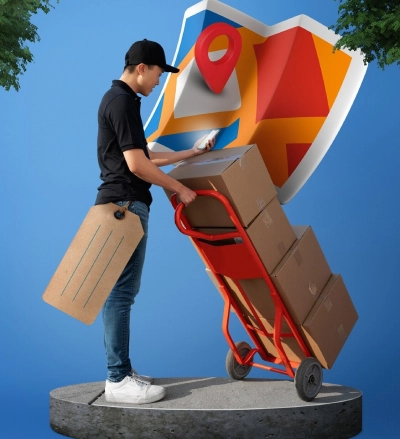Challenges and Solutions in Last-Mile Delivery
As the e-commerce sector expands rapidly, the pressure to deliver products quickly and efficiently has intensified. Last-mile delivery has become a crucial component of today’s supply chain and the evolving e-commerce landscape. However, several challenges impact delivery efficiency, including rising costs and delays. In this article, we will explore the complexities of last-mile delivery, examine the challenges it faces, and innovative solutions to meet customer expectations.
The Challenges Of Last-Mile Delivery
- Rising Customer Expectations: Consumers now expect rapid delivery options, including same-day or even same-hour service. Meeting these heightened expectations while keeping costs manageable poses a significant challenge.
- Route Optimization: Designing the most efficient delivery routes that accommodate multiple drop-offs is complex and often necessitates advanced technology to ensure timely and cost-effective deliveries.
- Cost Control: Last-mile delivery can incur high expenses due to factors like fuel, vehicle maintenance, and labor. Striking a balance between controlling costs, maintaining efficiency, and ensuring customer satisfaction remains a major hurdle.
- Technology Integration: Implementing new technology solutions (like real-time tracking and route optimization software) requires investment and often faces resistance from within the organization.
- Compliance with Regulations: Different regions may have varying rules and regulations regarding transportation and delivery, creating a complex landscape for companies to navigate.
- Driver Retention and Training: High turnover rates among drivers and the need for continuous training in customer service and technology usage are ongoing challenges.
- Capacity Limitations: During peak seasons, logistics companies often struggle to handle increased shipment volumes, leading to potential delays and higher costs. Strategic resource allocation and optimized routes are essential to maintain service quality while meeting demand.
- Security and Theft: Protecting high-value goods is a significant concern, as theft can occur at various points in the supply chain. Implementing advanced security measures, such as GPS tracking and secure packaging, along with comprehensive insurance, can help mitigate these risks.
- Fragmented Communication: Effective communication among stakeholders—warehouses, drivers, and customers—is crucial for smooth operations. Fragmented communication can cause delays and errors. Integrated technology solutions, like real-time tracking systems, can enhance coordination and transparency.
Addressing these challenges can lead to improved efficiency and customer satisfaction.
Overcoming Last-Mile Delivery Challenges
The last-mile delivery industry faces significant challenges, including rising customer expectations, complex route optimization, and a demand for sustainability. To address these obstacles, logistics companies can leverage innovative solutions like Dispatch Science.
1. Advanced Technology Utilization
Real-Time Tracking: Implementing GPS and real-time tracking enhances visibility for both companies and customers, keeping everyone informed about delivery status.
AI and Machine Learning: Using AI for predictive analytics improves demand forecasting and optimizes routes based on real-time data such as traffic and weather conditions.
2. Route Optimization
Dynamic Routing: Software that calculates the most efficient delivery routes in real time minimizes delays and reduces fuel consumption. Dispatch Science’s algorithms consider various factors to determine optimal paths.
Multi-Stop Planning: Strategically grouping deliveries by location can streamline operations, enhancing efficiency and reducing costs.
3. Sustainability Initiatives
Eco-Friendly Vehicles: Integrating electric or hybrid vehicles lowers carbon emissions. Dispatch Science can help manage and track vehicle sustainability.
Consolidated Deliveries: Encouraging customers to opt for fewer, consolidated deliveries reduces the number of trips and emissions.
4. Enhanced Customer Experience
Flexible Delivery Options: Providing various delivery methods, including same-day and scheduled deliveries, caters to customer preferences and improves satisfaction.
Proactive Communication: Automated notifications keep customers informed about their delivery status and any potential delays.
5. Data Analytics Leverage
Performance Metrics: Analyzing delivery performance helps identify areas for improvement. Dispatch Science offers robust reporting tools for data-driven decision-making.
Customer Feedback: Gathering and analyzing feedback reveals pain points and guides enhancements to the delivery process.
By implementing solutions like Dispatch Science, logistics companies can effectively navigate the complexities of last-mile delivery. Embracing technology, optimizing routes, prioritizing sustainability, and focusing on customer experience will lead to greater efficiency, reduced costs, and improved satisfaction in a competitive landscape
